

Anthony Crawford
1990 Lamborghini Countach review
6 Days Ago
Maserati's lust-worthy MC20 supercar re-establishes the iconic Italian marque, and bodes well for its latest product revolution.
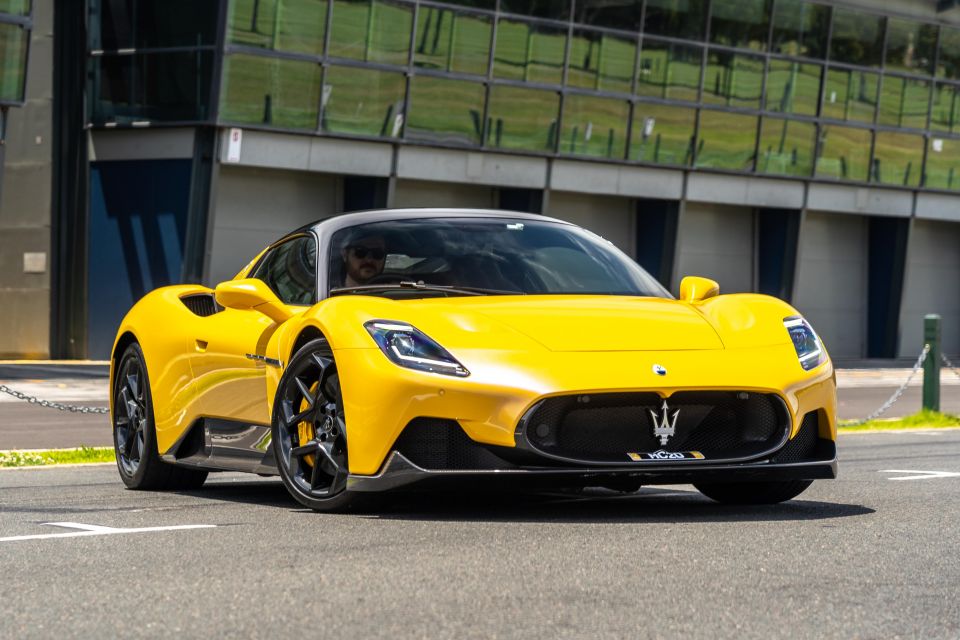


Quickly see how this car stacks up against its competition. Select any benchmark to see more details.
Where expert car reviews meet expert car buying – CarExpert gives you trusted advice, personalised service and real savings on your next new car.
Maserati is one of the most iconic and widely beloved automotive brands, with a back catalogue and a racing pedigree any competitor would covet.
This hasn’t always materialised in the most convincing range of products – lots of heart and soul, sometimes lacking the rest – but every car enthusiast alive keeps the Maserati fire burning somewhere in there.
Which is a big part of the excitement and hype surrounding the MC20 (Maserati Corse 2020), a mid-engine, carbon-fibre supercar with no compromises, an in-house engine, and a bead drawn on Maranello.

The MC20 is here to remind Ferrari, as well as Lamborghini, McLaren and all the others to watch their backs, on road and on track – since the MC20 will return the brand to GT racing too. Maserati has 107 years of history and legacy (Fangio, anyone?) to tap into here.
But its other job is to sprinkle some magic dust, as development leader and brand builder, over forthcoming higher-volume Maserati models led by the imminent Grecale crossover, which pay the bills.
The MC20 follows loosely in the wheel tracks of the MC12 from 2004-2005, with the ’12’ there standing for the number of cylinders – double the pot count of the MC20. But this one is all Maserati, no Ferrari. The mid-engine Bora of the ’70s also comes to mind.
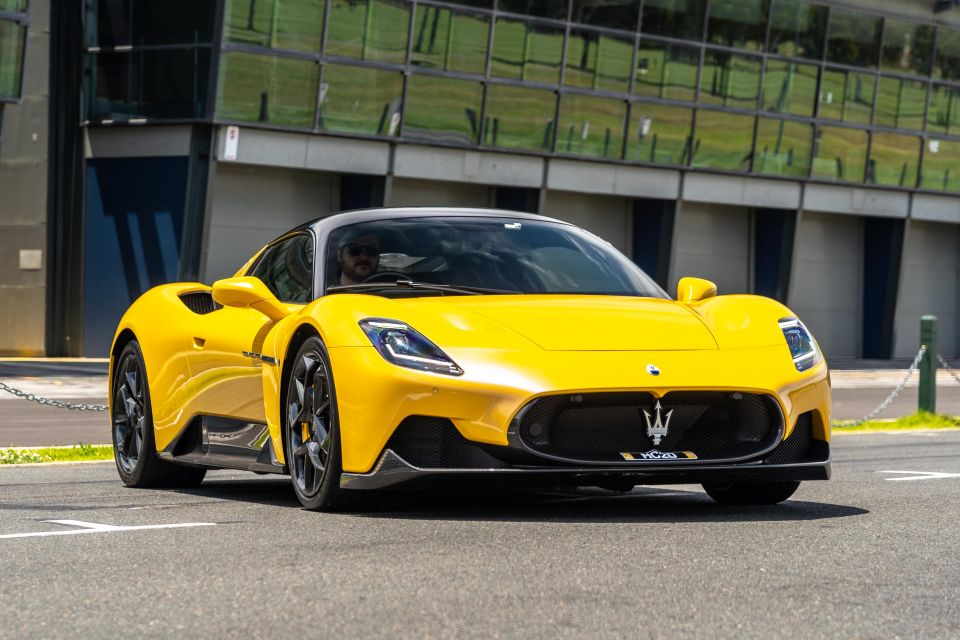
A Spider and all-electric MC20 spinoffs are each imminent too.
As has already been detailed, the MC20 is produced at the historic Viale Ciro Menotti plant in Modena, and was rapidly created by the Maserati Innovation Lab – 97 per cent of the development was done virtually before final tuning, on track and Apennine mountain roads.
The company was in a hurry, searching for a halo.
It loaned us the keys to this Giallo Genio (“an innovative bright yellow with an iridescent blue veil”) MC20 for just a day, to get a sense of what its new flagship offers.
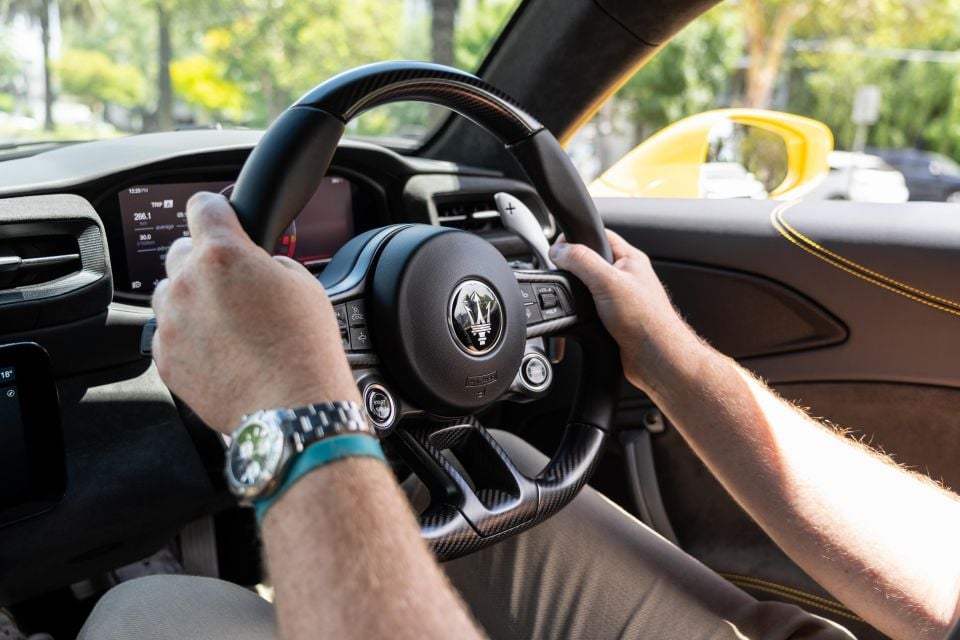
The fact we were confronted with an afternoon Melbourne hailstorm limited the miles we put under the tyres, for what should be obvious reasons.
Nor will this story be reviewing the way the MC20 tears up a circuit, unfortunately, because we didn’t get to drive it on one – though perhaps we can make that piece happen down the road…
The upside is that we were able to instead spend our time in the cockpit focusing on what most owners will: how the MC20 handles daily driving duties in GT fashion, and the responses it elicits from the general public as you pass them.
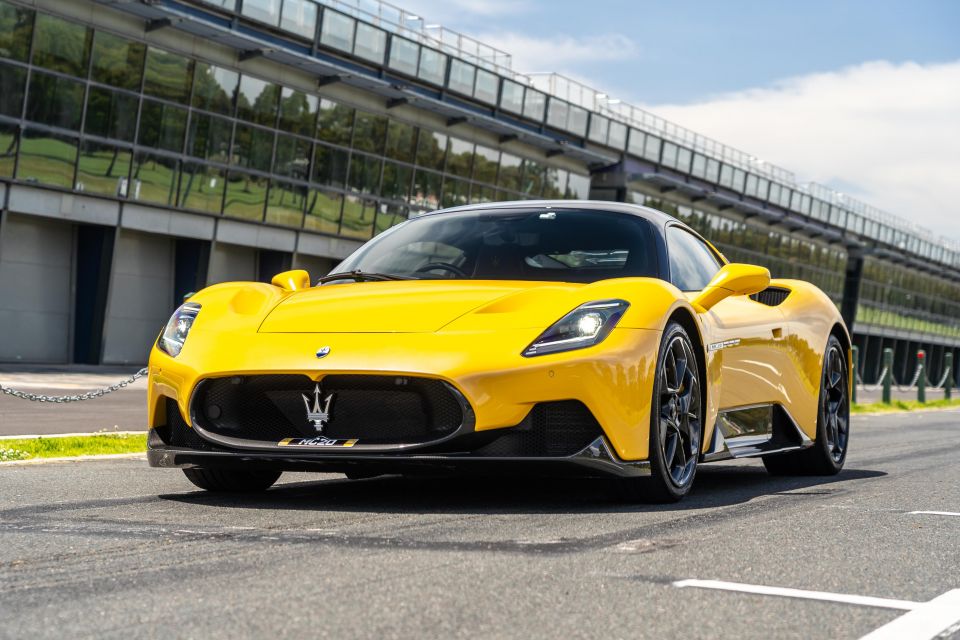
This is probably not a question the average buyer will be asking.
The price is $438,000 before on-road costs, compared to $484,888 for the Ferrari F8 Tributo driven here, and $446,500 for the McLaren Artura hybrid.
Of course, RRP on a supercar is a meaningless metric, because personalisation is everything. Our test car carried a price-as-tested of $640,562.
Maserati will make 1500 of these in Italy each year, of which about 30 per annum will come here. The entire 2021 allocation is already spoken for.
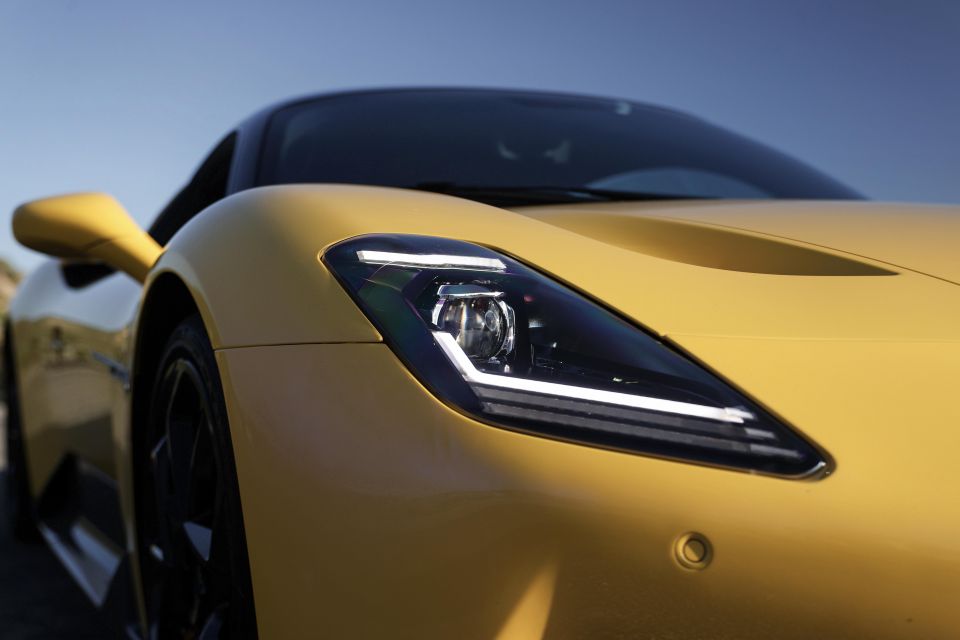
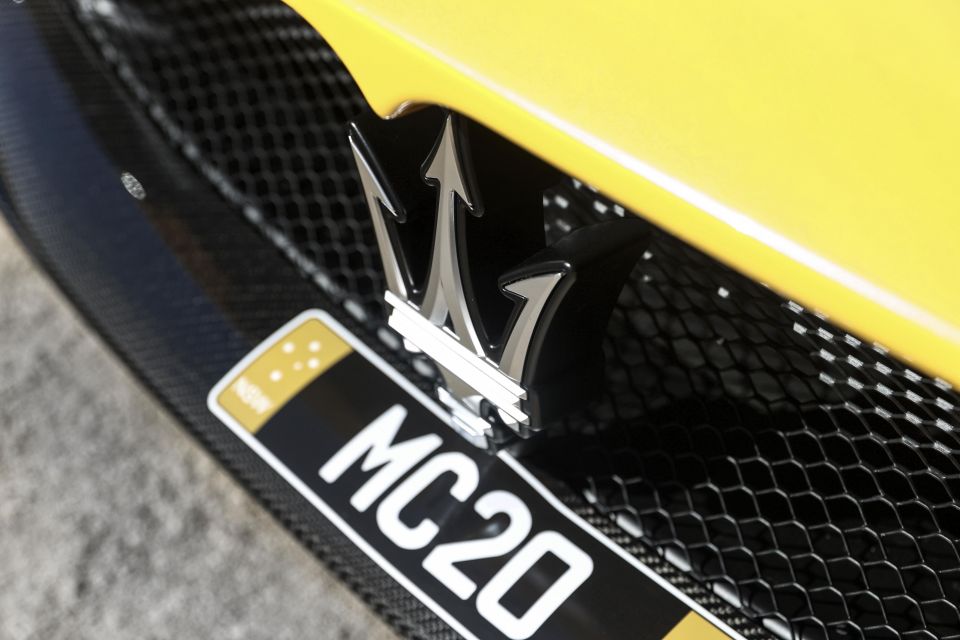
Features include Glossy Dark Miron Birdcage wheels, a fibreglass bonnet, LED lights, proximity sensing butterfly doors, stainless steel sills, and parking sensors at both ends.
There’s also six-way powered ‘comfort’ seats with embossed Trident logo, dual-zone climate control, an Alcantara headliner, matte carbon-fibre trim on the centre tunnel and steering wheel, and a digital rear-view mirror (much needed given the letterbox outward view).
Other interior tech includes a 10.25-inch digital cluster and matching central touchscreen, DAB+, sat-nav, Apple CarPlay and Android Auto, a wireless phone charger, six speakers and passive cruise control.
Our car came with nearly $200,000 in options, which is a little hard for many of us to fathom, but also entirely commonplace in the echelon of supercar collectors. Isn’t that right, Alborz?
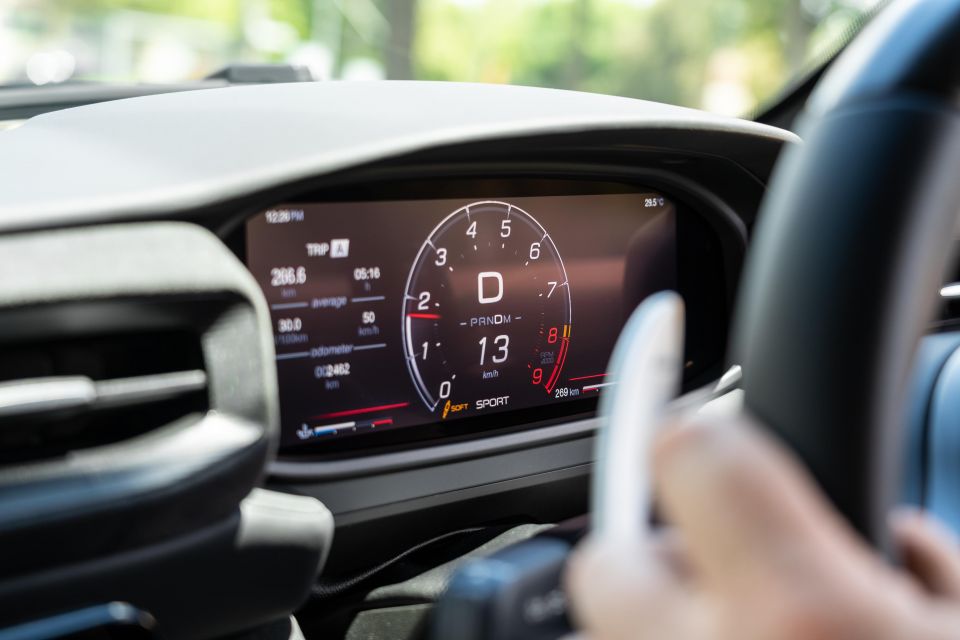

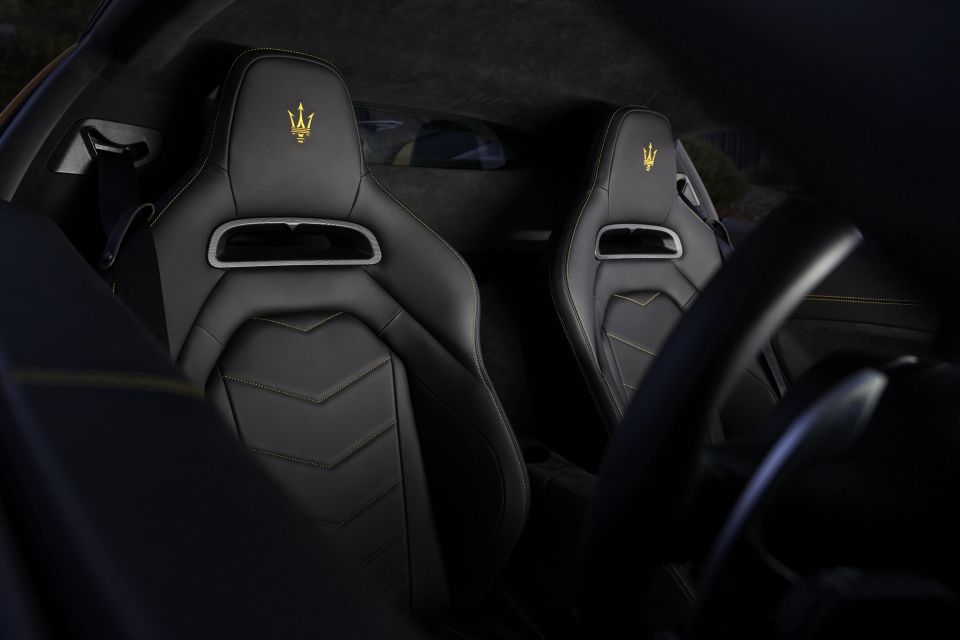
We’re talking that three-layer paint – sunny yellow with subtle blue and white undertones – black contrast roof, carbon-ceramic brakes with yellow calipers, a carbon-fibre engine cover, front suspension lifter controlled by a steering wheel button, and an electronic limited-slip diff in place of the standard mechanical unit.
Inside are extras including an alarm system, auto-dimming side mirrors, heated front seats, stitched Trident seat headrests rather than an embossed display, and yellow stitching with chevron design on the seats.
There’s also nearly $100,000 (we’re told) worth of carbon-fibre, as part of the Exterior Carbon Pack, which adds: dark matte finish dual exhaust system; plus a carbon-fibre splitter, rear diffuser, door and fender sills, and bonnet with body-colour paint.
Maserati has a great configurator page where I played with hundreds of iterations of MC20 specifications. It’s worth a look.
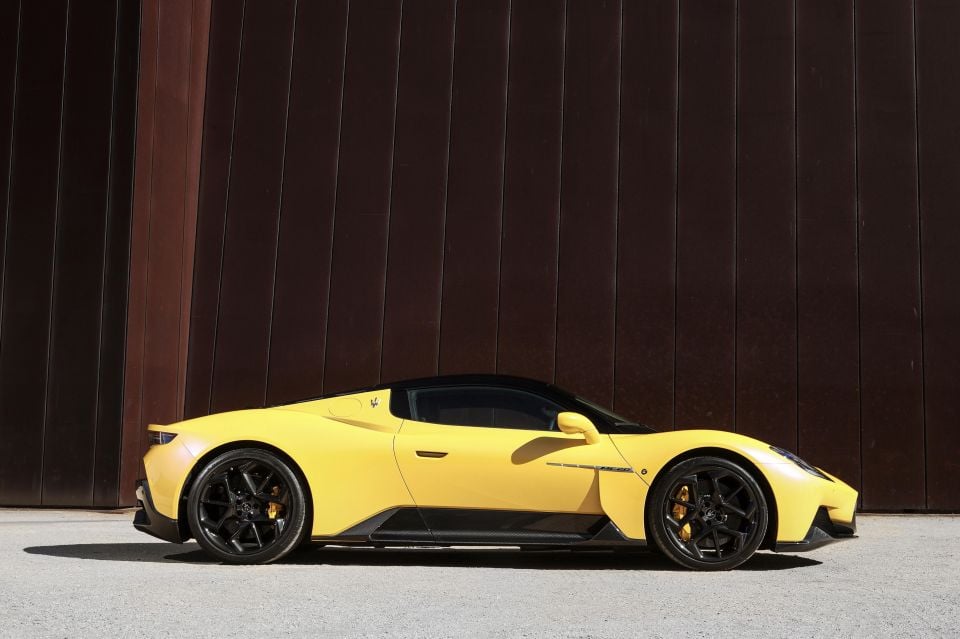
Watching an MC20 crashed into a barrier in the name of NCAP would be painful, but there’s no such rating.
Its super-stiff carbon-fibre monocoque developed with Dallara means you’d expect fair levels of rigidity.
This car does not bristle with active driver-assist features. Of course at this price it should have things like blind-spot monitoring (an optional extra), though the question is more whether that will bug buyers. It would me.
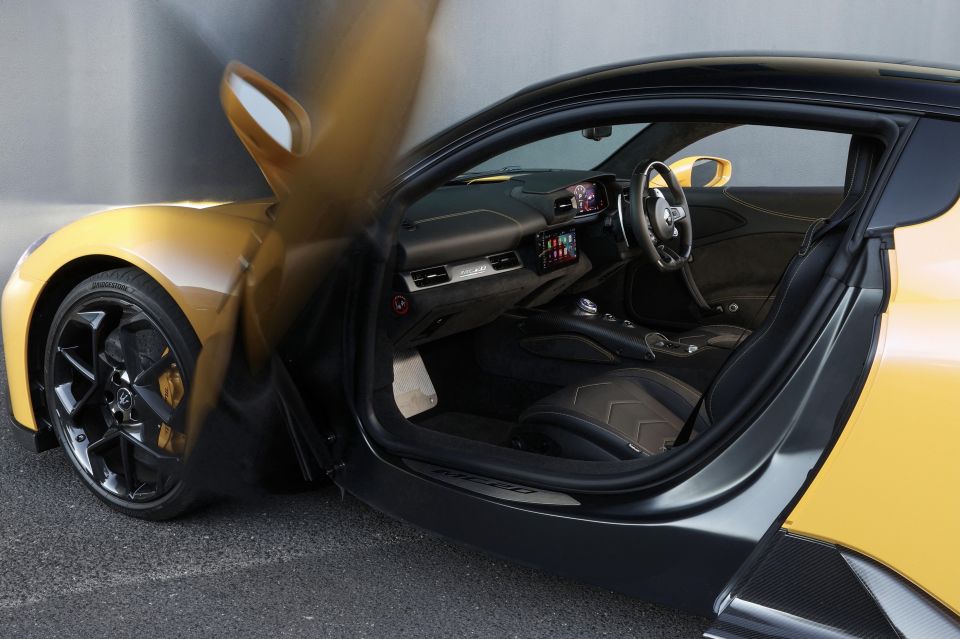
It’s a decidedly minimalist interior, with Alcantara and carbon-fibre touchpoints seemingly everywhere you look, yellow stitching to match the paint, and very little to distract you from the actual driving.
You push a button under the door handle and the lightweight butterfly door spectacularly lifts, creating space to enter carefully, before you find yourself wrapped up in the Sabelt bucket seat with one-piece backrest, more carbon-fibre inlays, and stitched Tridents.
Some reviewers have complained it’s all a bit simple and austere, whereas to me that seems precisely the point.
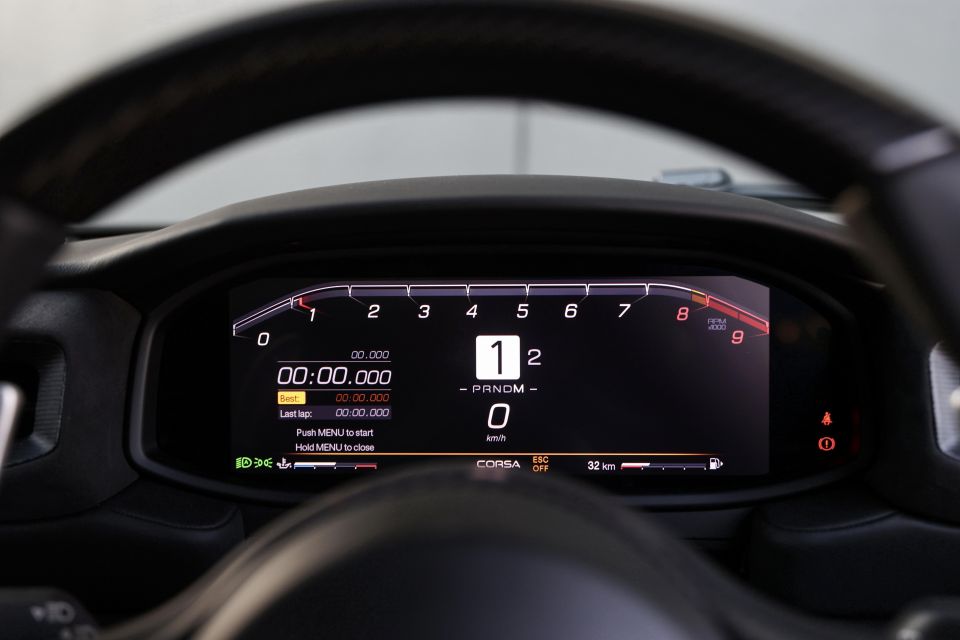
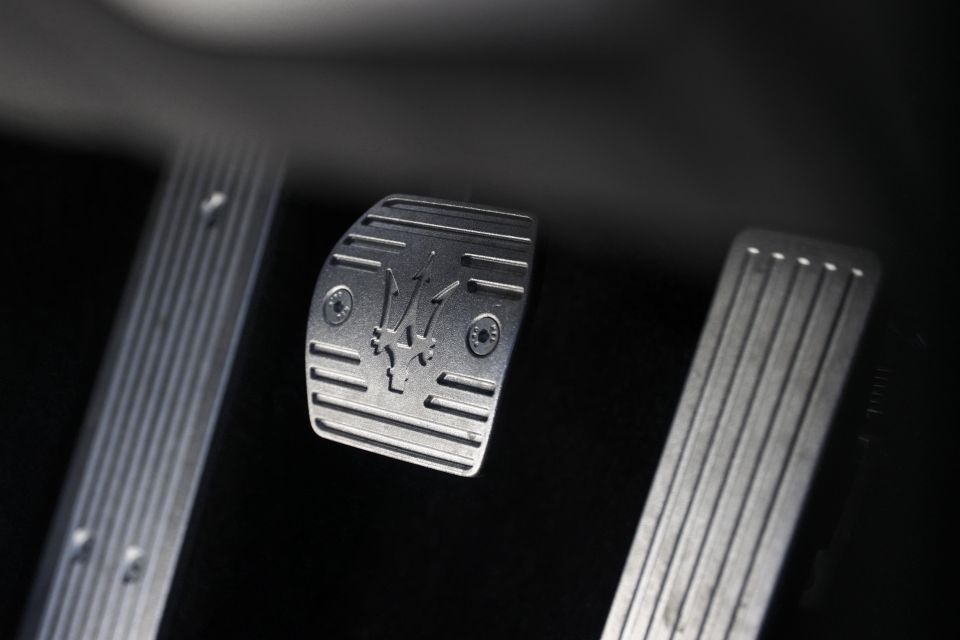

The seats and steering wheel offer ample adjustment, and aside from the slightly offset accelerator pedal that took a second to adjust to, it all feels very comfortable and un-compromised. Until you try to see out the back… Thankfully there’s a digital rear-view mirror.
The wheel looks and feels very Alfa Romeo-like, though it’s also pleasingly tactile and perfectly formed. The Start and Launch buttons on the wheel are intuitively positioned, and the fixed paddle shifters are damped and made of aluminium.
The digital cluster has various display models to cycle through, including a lap-timer in the Corsa mode, which also priorities the digitised tachometer. Flanking this screen on each side are high-mounted vents for cooling off sweaty track hands.
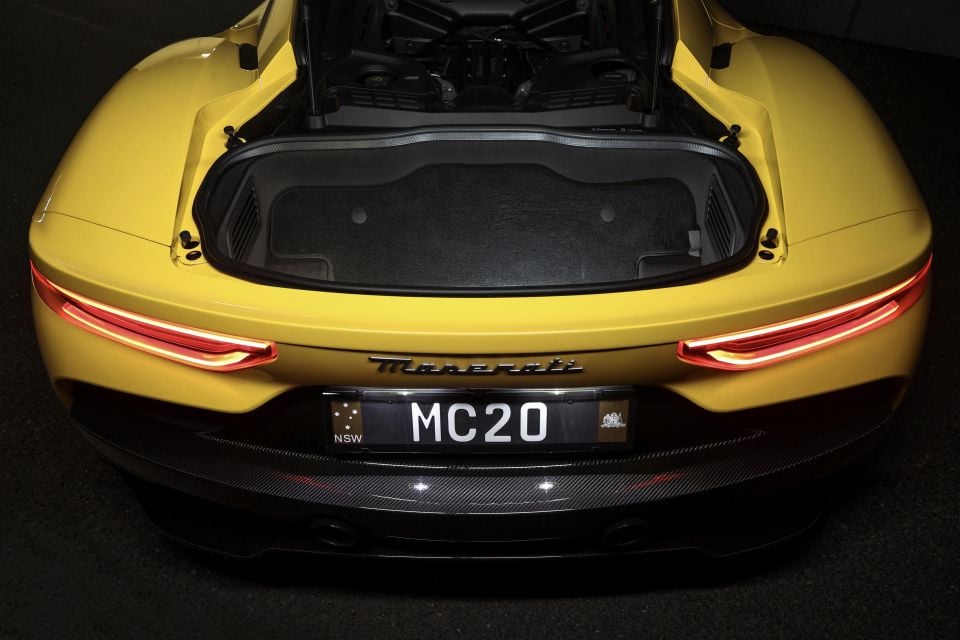
The centre touchscreen is strangely tilted downwards, but the infotainment system is really simple to use thanks to a vertical menu tile, and responsive to inputs. This is one occasion I’ll forgive the deletion of buttons in favour of screen menus, because it suits the aesthetic.
Running along the trim centre tunnel is a series of rotary dials: the large silver and blue top one controls the driving mode and feels built like a Swiss watch. It also fills the void left by the absence of a trademark Maserati analogue dash clock.
Drive and Reverse are also powered by buttons, while you pull both paddles for Neutral. It engages Park automatically, and the handbrake switch is next to your right knee.
While storage in a mid-engine two-seat supercar is never a top priority, there are a couple of little nooks scattered about, plus two small cargo compartments front and rear measuring 47 litres and 101 litres respectively. Room for a few soft bags.
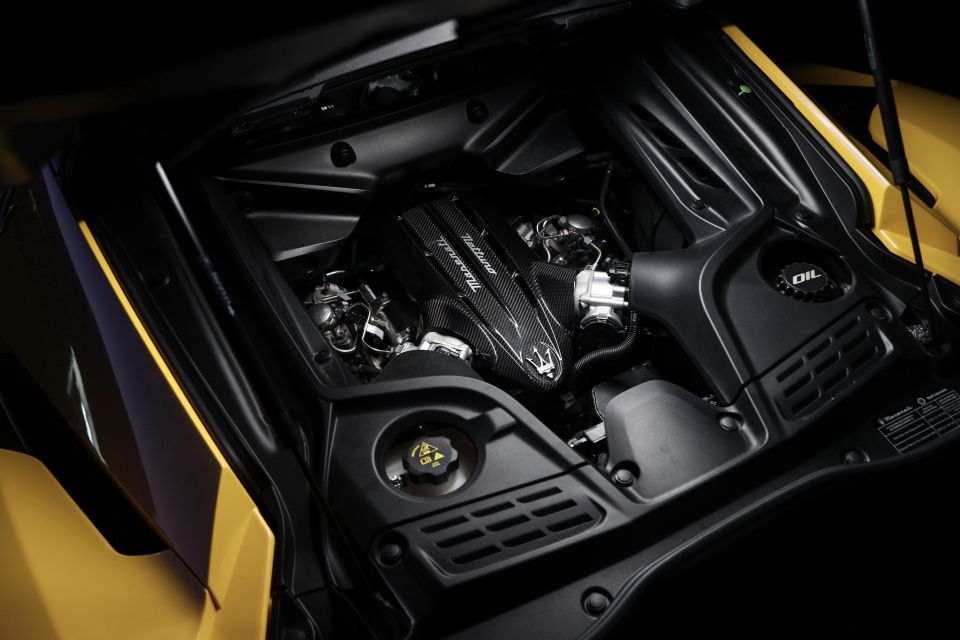
A small empty storage space. The engine (beating heart) lies right behind the occupant space instead. Look at that carbon-fibre cover.
“It was a tough challenge for us, because in December 2018 all we had was a blank sheet of paper,” said Maserati engine designer Dario Benazzi, discussing the 3.0-litre V6 that would take on the name Nettuno.
“We’re proud of starting to make our own engines again after twenty years, but also aware of the responsibility this implies. We have to persuade people we’re really good, so good that Maserati has decided to stop buying engines from Ferrari, and to build them in-house instead,” he added.
Nettuno is a dry sump 90-degree engine with 2992cc displacement, outputting 470kW of power at 7500rpm (redlining at just under 8000rpm) and 730Nm of torque between 3000 and 5000rpm. Its DIN mass is billed as under 220kg and it hits Euro 6D emission regulations.
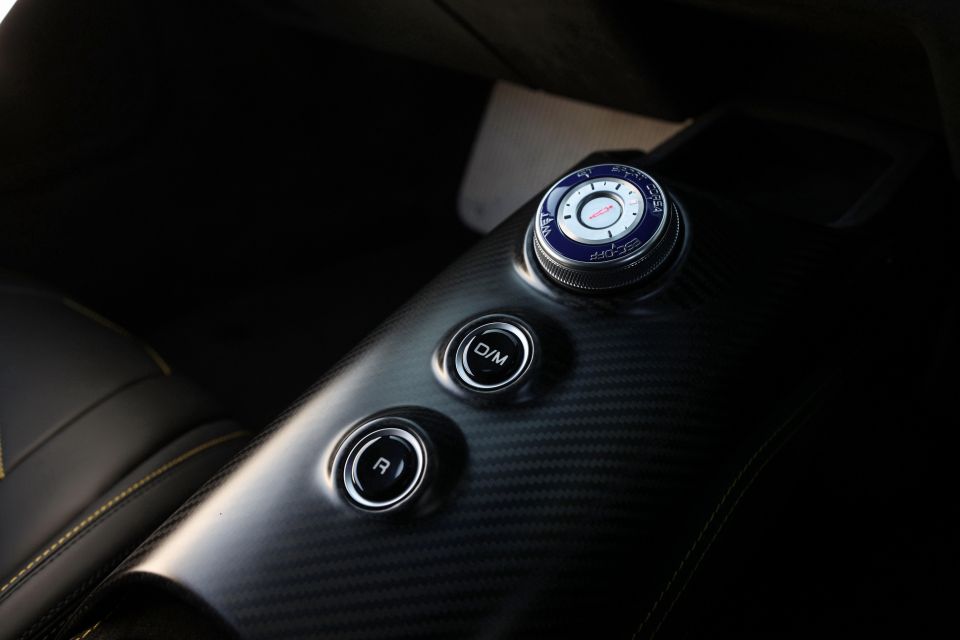
It’s also currently the highest-powered six in series production, and its 157kW per litre figure makes it the leader in specific power output. It has a compression ratio of 11:1 and its a pre-chamber combustion system with twin-spark plugs is racing-derived.
Each engine is hand-made in Modena then tested to ensure everything is working perfectly. Production of each Nettuno powertrain takes about 25 hours, or just over three working days, says Maserati.
“The maintenance of air quality [in the factory] is fundamental because every dust particle could impair the functioning of critical components such as the prop shaft, pistons and friction bearings, which have to withstand extremely high loads and rotation speeds, combined with assembly tolerances of the order of a few micron,” the company added.
The engine is mated to a Tremec eight-speed wet DCT auto with shifter paddles.

Where expert car reviews meet expert car buying – CarExpert gives you trusted advice, personalised service and real savings on your next new car.
The MC20 jolts from 0-100km/h in just 2.9 seconds, and keeping the accelerator mashed can return a 0-200km/h time of just 8.8 seconds. Top speed is north of 325km/h.
The carbon-fibre composite monocoque isn’t just stiff, but light, helping the MC20 tip the scales at a nudge under 1500kg. The front and rear double-wishbone suspension uses a semi-virtual layout designed to keep the tyre patch more constant through corners.
Maserati claims the aerodynamics were designed through more than 2000 man-hours in the Dallara Wind Tunnel, and more than a thousand Computational Fluid Dynamics simulations.
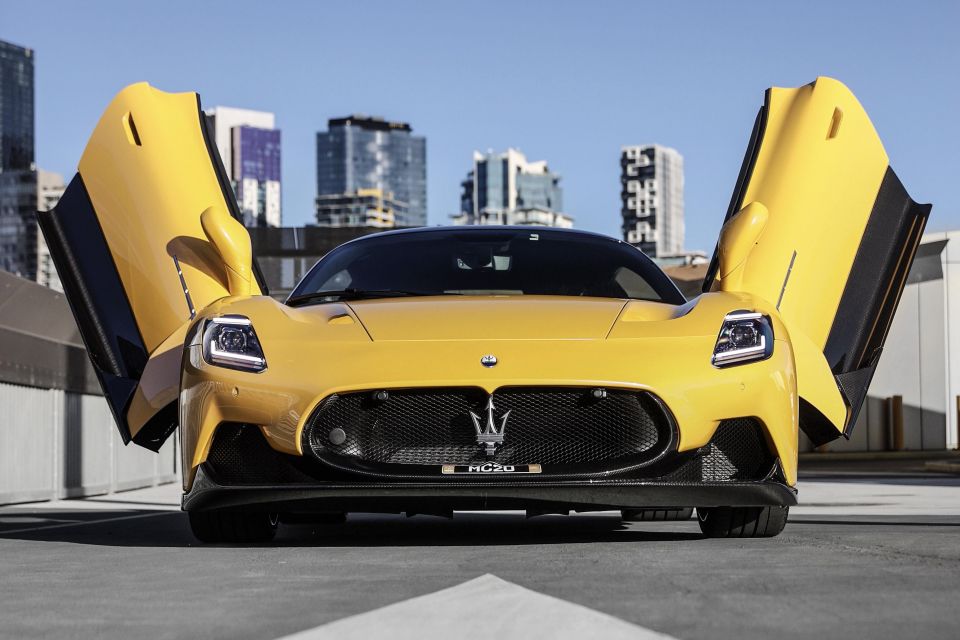
The standard brake rotors are 380mm front and 350mm rear, clamped by respectively six- and four-piston calipers, but our tester had 390mm/360mm carbon-ceramic (CCM) stoppers instead. It also replaced the standard rear mechanical LSD with an electronic one.
The sexy centre rotary dial takes you through five drive modes with their own colour coordination. The modes operate the usual array of functions, adjusting engine boost, pedal sensitivity, active exhaust valving, shift timing, damping, and traction control parameters.
The car starts in GT which makes everything as comfortable and daily-driverish as possible, and indeed it pulls off the trick surprisingly well, only opening the exhaust valves north of 5000rpm to keep the engine more sociable, softening the ride, and moderating throttle take-up.
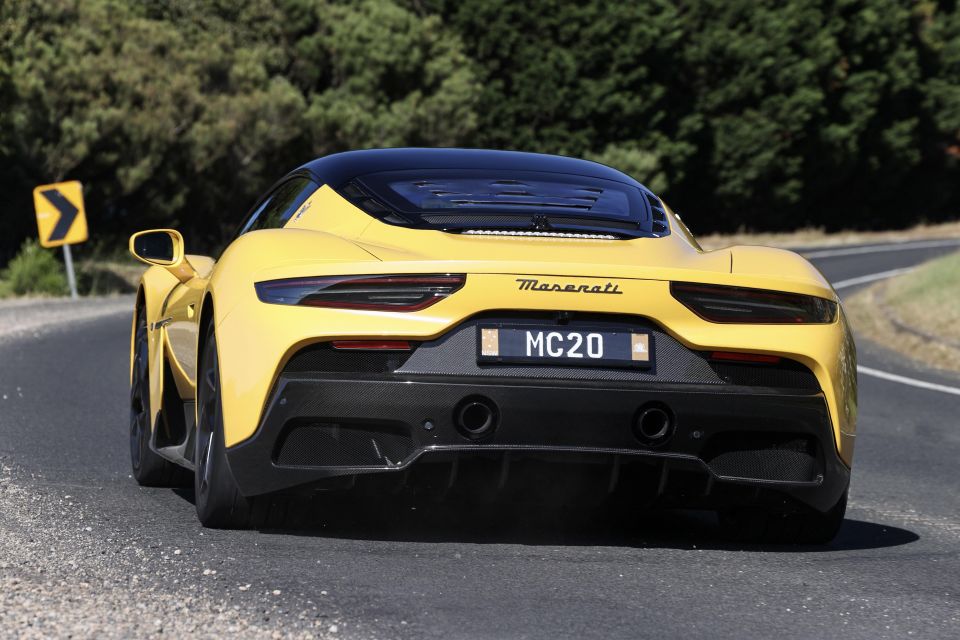
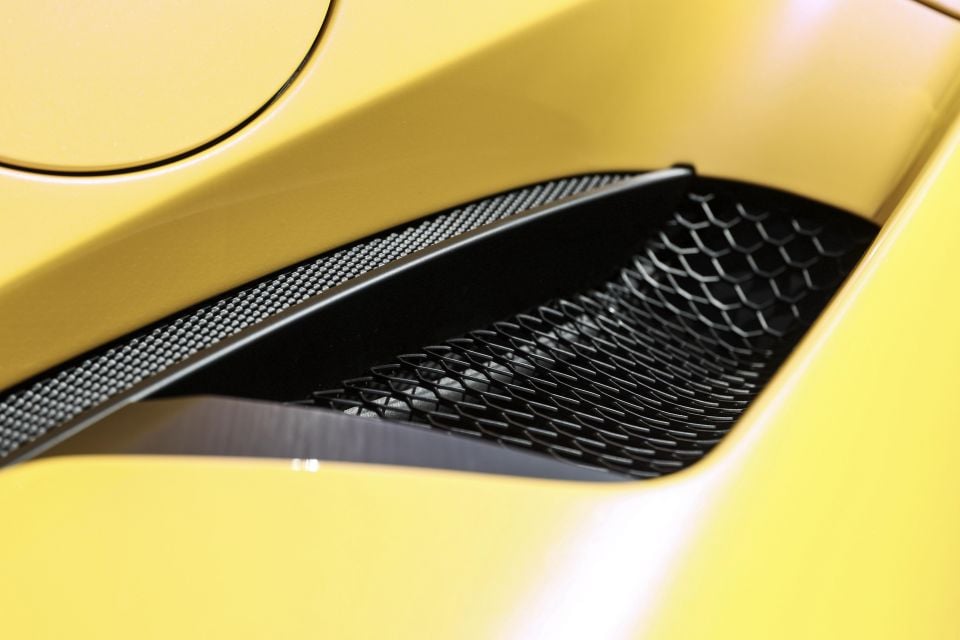
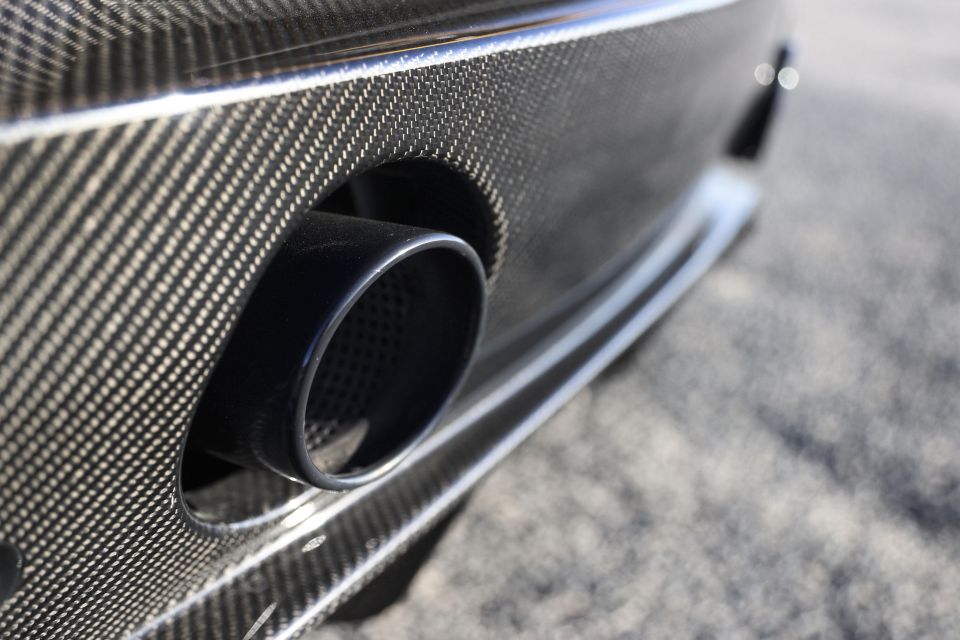
Sure, the option primo brakes feel wooden at first when cold, and you’re advised to activate the 50mm front suspension lifter (via a wheel button) when you see a driveway or speed bump. You also hear every minor pebble that contacts the undercarriage, and it’s not easy to see out of.
Minor quibbles, considering that in truth it’s comfortable and controllable enough in GT to be driven quite easily by almost anyone. Unless they’re averse to constant gawking from passersby.
Sport mode sharpens up the throttle and shift points, adds some traction control leniency, and stiffens the adaptive shocks. You can then press a sub-set button to make the ride a little more comfortable while keeping all the other performance parameters dialled up.
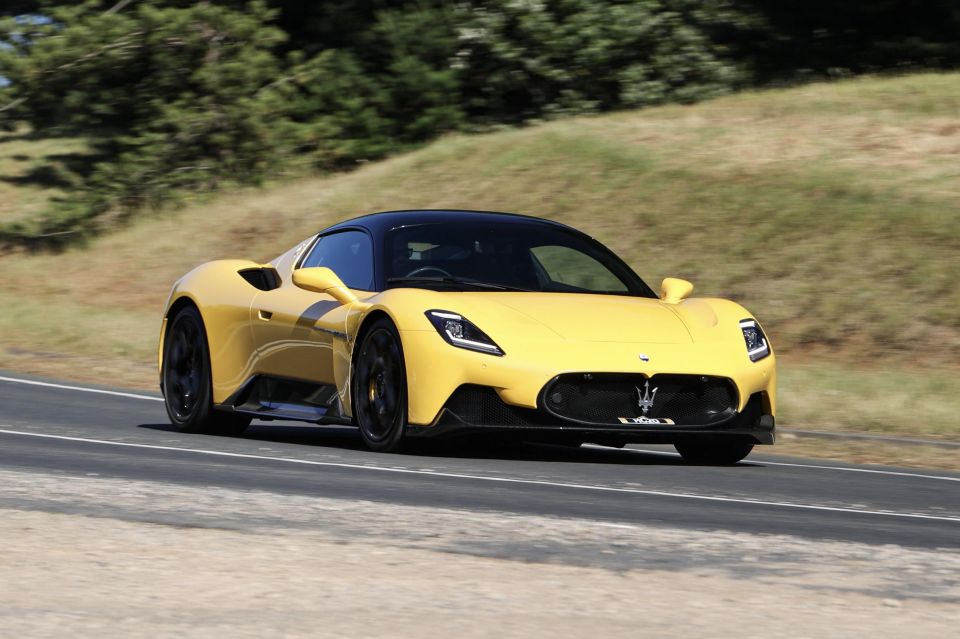
It seems faintly ridiculous to comment on this car’s dynamic abilities given we’re yet to track it, though it feels suitably neck-snapping, and the directional changes show how stiff the monocoque is.
It never felt twitchy or terrifying in the old-school supercar fashion, allowing smooth steering inputs. Even in challenging weather it felt stable and competent, though there’s a lot of extra dynamic depth below that smooth surface.
About that engine note. The sound is crisp, with a rasp, a little higher than Maserati’s sonorous V8s, suited to its high-revving nature. All I can say is that, general impressions among the team were mixed, with some longing for a little more bass.
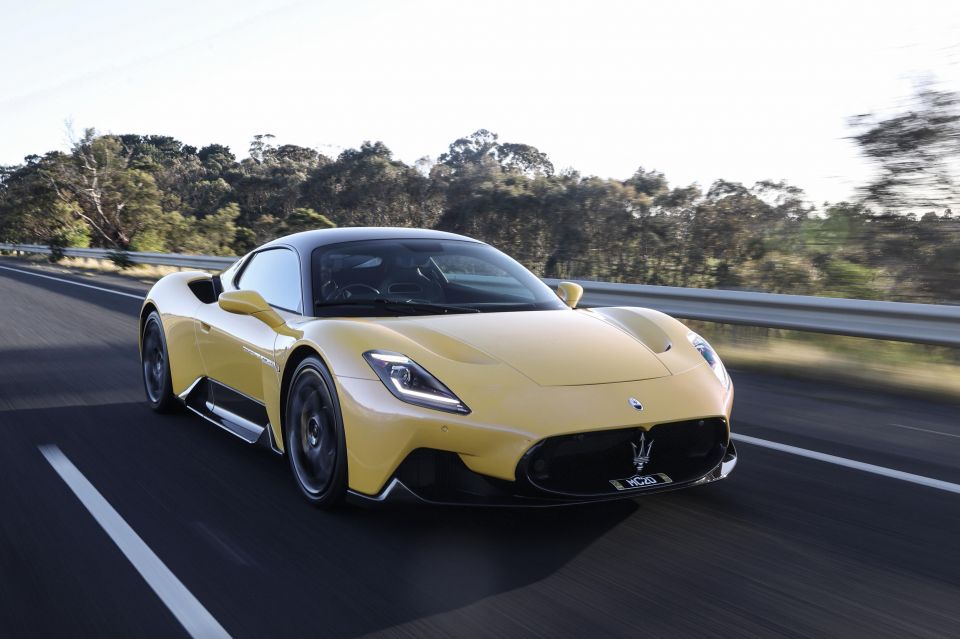

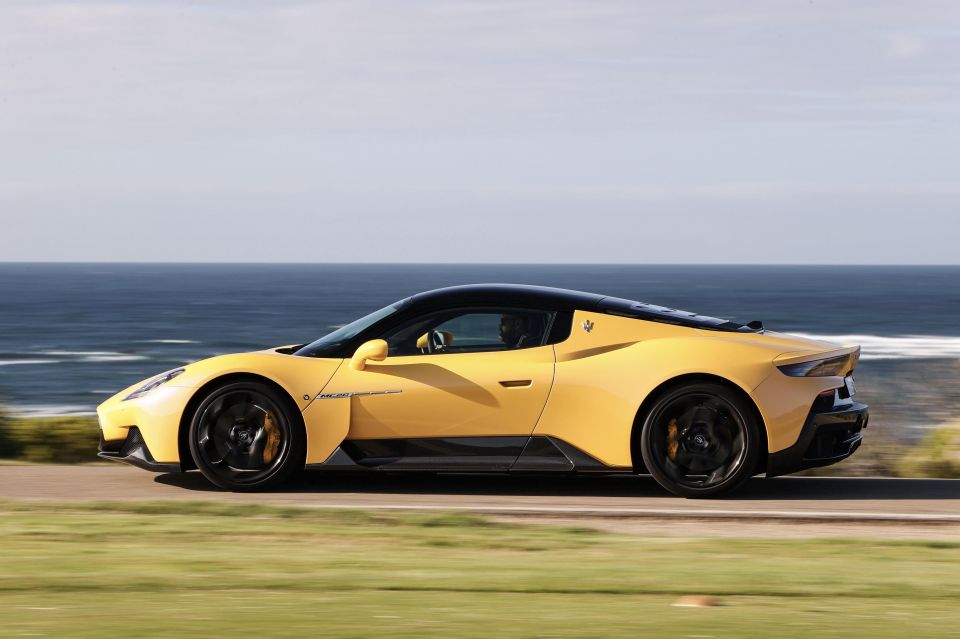
This car certainly turns heads with its looks more than its soundtrack.
For race days you have Corsa mode which pins the exhaust flaps open and sets everything to extreme sensitivity levels. You can also completely disengage the ESC, and when the gearbox is in manual paddle mode, it means it.
One thing I’d add, is if you’re planning to tap into the MC20’s user-friendly side with regular road driving, we’d just keep the standard brakes.
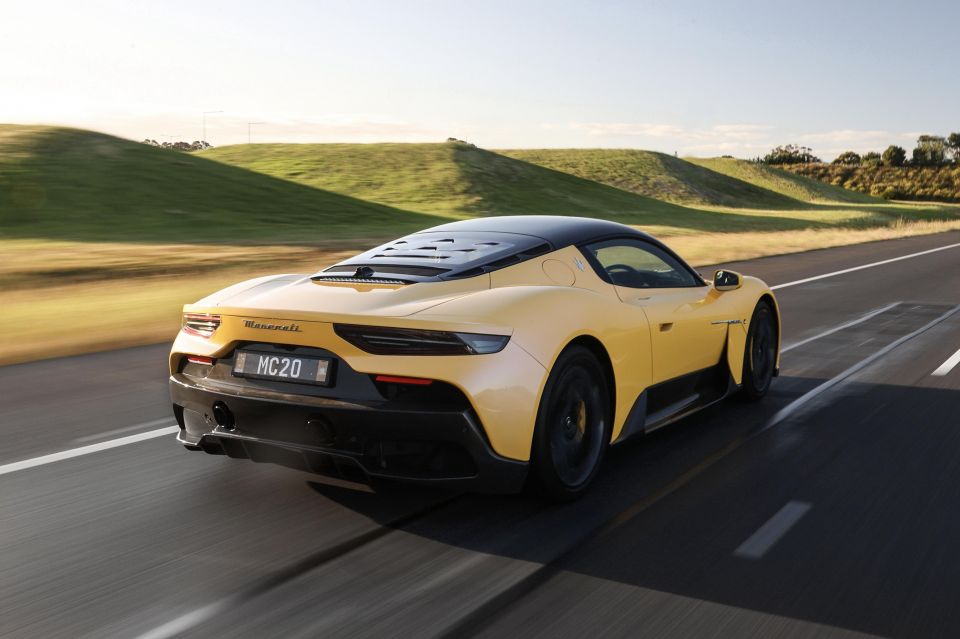
The MC20 is an incredibly exciting and dynamic supercar in its own right.
It occupies the same echelons as proper tier-one supercars, but doesn’t seem to feel out of place, and with an EV coming this one will surely go down as a collector’s item.
But more telling is what it says about brand Maserati, in its latest incarnation. The company makes much of its rapid, largely virtual development here and yet this comes across as a cohesive and lovingly created project.
If it’s indeed emblematic of Maserati’s new era, as billed, then it shows us what this brand can do with the right resources and focus – which would be cause for celebration for all enthusiasts, and not just the select group of high rollers fighting over this car.
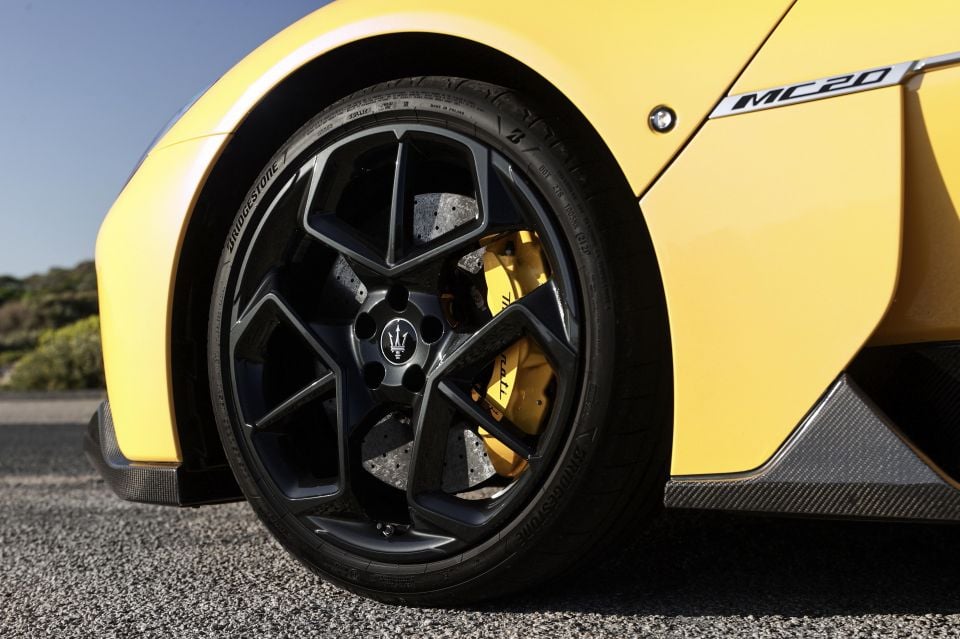
Click the images for the full gallery
Where expert car reviews meet expert car buying – CarExpert gives you trusted advice, personalised service and real savings on your next new car.


Anthony Crawford
6 Days Ago


Matt Campbell
5 Days Ago


James Wong
4 Days Ago


Max Davies
2 Days Ago


Josh Nevett
1 Day Ago


Josh Nevett
16 Hours Ago